The gist: Government has become a loaded term. Some of us avoid the “g-word” altogether. The good news: Research shows there’s a reservoir of more positive associations that can be tapped when it comes to the physical and organizational public structures in place that keep us safe and help us thrive. Our job is to tap that reservoir each time we communicate about how sound public policy can be a big part of the solution for the most challenging issues we face as communities and nations.
Flashcard Tips:
1. Firefighters, parks, and post offices.
What would we do without garbage collectors? Paint vivid, concrete images of government’s role in our lives to reinforce the idea that our prosperity and quality of life depend on sound policy, shared resources, and public structures. More details.
2. Citizens, not consumers.
Government isn’t a vending machine where taxpayers “buy” a service that benefits them individually. Instead, taxes, fees, our voice and our votes can be framed as investments in the future — our community bank account, a tool for problem solving and long-term planning. More details.
3. Telling good stories.
Connect your policy solutions to our history, shared national (or local) stories, and core values. Good stories about government emphasize working together for the common good. More details.
The Research Project: “How To Talk About Government”
Beginning March 2004, Demos partnered with the FrameWorks Institute and other organizations to research Americans’ attitudes toward the public sector. Rather than simply studying static public opinion about government, they wanted to understand how Americans think about government. Specifically, they wanted to learn about the dominant frames or stereotypes to which Americans default when they hear stories about government and how those frames affect public choices and actions. Ultimately, they wanted to know how to best “reframe” the concept of government in order to evoke a different way of thinking — calling up positive views of government that often existed under the surface — building up new perceptions that advance collective understanding and support for public sector solutions to society’s challenges.
The research included a review of hundreds of polls on attitudes toward government, focus groups, hundreds of individual and small group interviews, and a large priming survey was conducted to test new approaches to communicating about the public sector. Ultimately, a set of guidelines for communicators was developed.
Another key organization in the research was the Council for Excellence in Government, which stopped operating in 2009. Most of the Council’s staff and programs then joined the Partnership for Public Service.
Useful links from the Demos website
- “How To Talk About Government” video
- Talking About Government summary (pdf)
- Rebuilding Support for Government page
- Main page on the Demos website
Attention Canadian readers: This research is focused specifically on Americans and American attitudes. Click here for a note to our Canadian readers.
The Details: More Information About the Flashcard Tips
1. Firefighters, parks, and post offices. An effective simplifying model: Public structures
Offer a persona for government more in keeping with democratic ideals: responsible manager, watchdog, long-term planner, the people’s voice, etc. From clean water and safe food to financial regulations and public health programs, government acts everyday in ways that protect and empower us all. The idea is to emphasize the various roles of government that people do recognize and value.
Simplifying models are brief, “user-friendly” explanations or analogies that help people understand a complex issue or concept.
“How to Talk about Government” research concluded that an effective way to improve the discussion about government is to focus on public structures and benefits of public structures — positive examples of government that often remain invisible or ignored.
Public Structures – critical systems and objects that government creates and maintains, including both physical infrastructure and also organizational systems such as courts, schools, regulatory systems, roads, and parks.
Benefits of Public Structures – the important benefits that flow to citizens and society, including greater prosperity, security, stability, efficiency, and economic or personal opportunities.
More recommendations for talking about government on the Demos website
2. An Overarching Challenge: Consumer vs. Citizen View
The research also illuminated two coherent, but opposing, mindsets toward government: consumerist and citizen.
We live in a highly “consumerist” culture and Americans pride themselves on “getting the best deal” and being “smart shoppers.” Unfortunately, this consumerist stance has also bled over into our relationship to the public sector. The public often defaults to a consumerist view—as opposed to a citizen view—when they consider their own relationship to government. This “lens” on government is problematic for a number of reasons and gets in the way of more productive considerations of the public sector’s roles and responsibilities. When they are in this mode of thinking, they tend to utilize a “what’s in it for me” analysis of government action, focusing narrowly on getting the most for their money and making the best point-of-purchase decisions. They are not thinking as citizens about collective action and investment, about long-term needs, shared responsibility or working together to solve problems.
To elevate a citizen stance toward government, the research suggests that we should:
- Avoid portraying government as a laundry list of services that individuals “buy” with their tax dollars. Avoid referring to public funds as “taxpayers’ money”; and
- Emphasize our shared responsibility to maintain the public structures, services, and programs that create our quality of life.
More recommendations for talking about government on the Demos website
3. Telling the right story. Are you telling a productive story about government?
Stories trigger frames which cue our audiences to what is important, what solutions are possible, who is responsible, what their role is, and how government fits into the picture. Here are some questions to ask as you tell your story.
Am I telling a story of crisis or one of pragmatic possibilities?
Consider the differences between the children’s stories – Chicken Little and The Little Engine that Could. Which one are you telling?
While crisis stories and stories with victims as main characters are familiar, the cumulative weight of individual crisis stories does not add up to convince readers of the need for effective government. Rather than focusing on conflict and crisis, we recommend considering how your narratives can evoke hope, aspiration and pragmatic problem-solving.
Do I evoke positive, hopeful images of my state, my community, or my country?
The folklore, mythologies, and stories we tell about our country and our communities also help define us as individuals and groups. From “Founding Fathers” to cyberspace “Netizens,” our very identities are wrapped up in the narratives we tell and retell — as Americans, as Canadians, as members of a tribe, a family, or members of a faith community. Narratives that evoke our shared values, shared histories, sense of community, or shared emotions and experiences provide a structure upon which policy solutions can connect to people’s lives and our collective identities as groups.
In Demos’ work in various states they have found it useful to explore the origins of widely-shared national “stories” — the principles on which the nation was founded, the sacrifices that have been made for freedom, equality, opportunity, and prosperity.
Sometimes communities or states have equally powerful narratives that define peoples’ thinking. Within them are often insights into the cultural understanding of what a state is about – its sense of itself. We believe that looking into your state’s historical state stories can be a useful – or at least informative – exploration.
For example, in Vermont, where the state motto is “Freedom and Unity,” advocates recognized how these seemingly contradictory values shape the state’s self-image and influence attitudes toward government and public policy.
Rhode Island was founded by people seeking freedom from persecution and looking for opportunities to start new lives. Their state motto is “Hope.” Advocates working with Demos have been exploring how these founding “stories” can be used to reshape public debate and awareness about their current challenges.
In the Northwest, we have particular stories about ingenuity and resourcefulness and a particularly strong connection to the environment.
What roles to do I assign the actors—particularly government and the public—in my “story?”
Every story we tell about public policy issues has characters; typically, government and the public have leading roles in our stories. How can you portray government as a productive, necessary character in your story? How can you talk to the public as citizens, as participants in the story and not merely consumers of government?
Government as a Character in our American Story: Research that Demos commissioned demonstrates that Americans typically see government in very narrow ways—as either elected officials (talking heads to love or hate) or as a monolithic bureaucracy (vast and nebulous). When assigned these limited roles in the public mind, government isn’t seen as a necessary, productive, and reliable character in our American story. To help Americans develop a broader understanding of government, the research indicates we must assign government roles that Americans value—such as government’s role as a consensus builder, long-term planner, or protector. In addition, our communications must speak to the mission of government and to highlight the values that give rise to government in the first place.
The Public: Consumers or Citizens? As described above, the Demos research also revealed that when Americans adopt a consumer stance towards government, they bring into civic thinking many of the habits of consumerist thinking. From a consumerist viewpoint, individual gain and individual responsibility is advanced. While from a citizen standpoint, common good, shared fate and mutual responsibility are prioritized. To combat the pitfalls of applying consumerist expectations towards government, we recommend portraying the public as citizens in your story. You can do this by emphasizing our shared responsibility and avoiding portraying government as a laundry list of services that individuals “buy” with their tax dollars.
More recommendations for talking about government on the Demos website
Is “government” a different kind of word in Canada?
The Demos “How to Talk About Government” project is focused specifically on American attitudes — and based on extensive research among American citizens, not Canadians. The same attitudes do not necessarily apply to Canadians who likely have a very different relationship with government.
If you have insights into these cultural differences and have ideas about how Canadians perceive government and engage in civic activities, please let us know. We’re interested in exploring ways of “Talking Canadian” — that, is tapping into Canada’s founding stories and sense of national identity.
Please send ideas to Anna Fahey: anna@sightline.org.

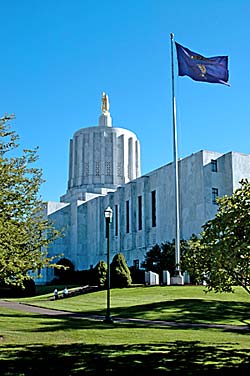

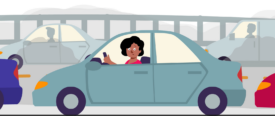

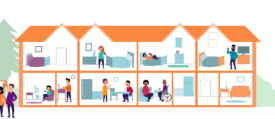
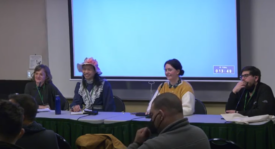
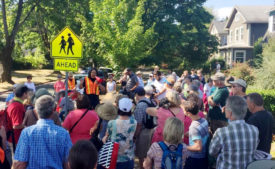


Comments